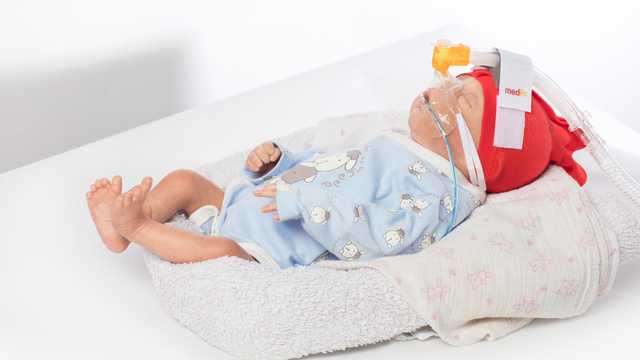
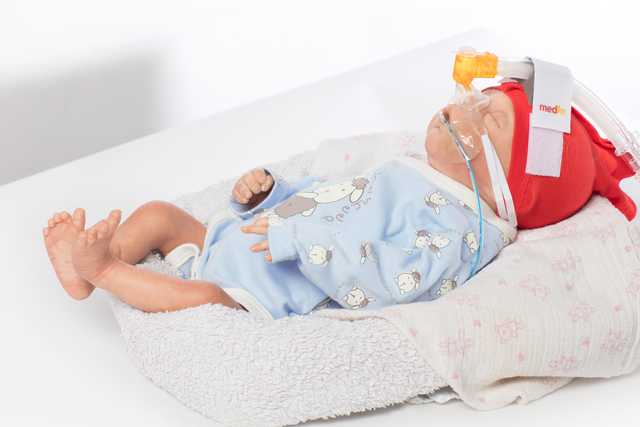
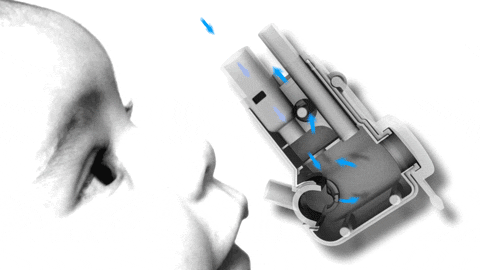
Medijet actively generates CPAP pressure using a modified Benveniste valve (
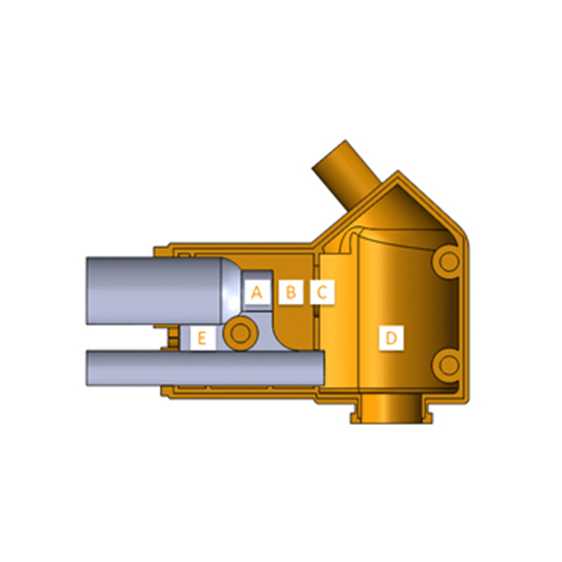
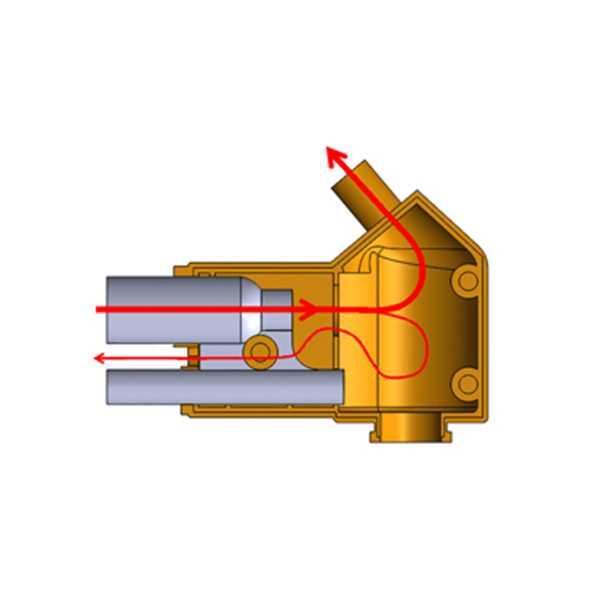
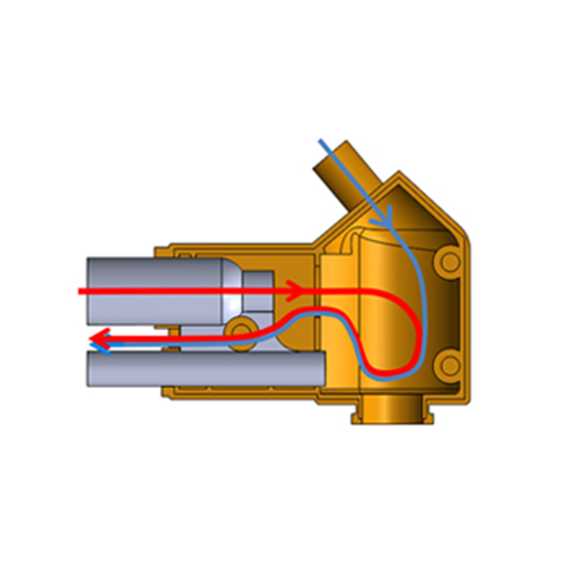
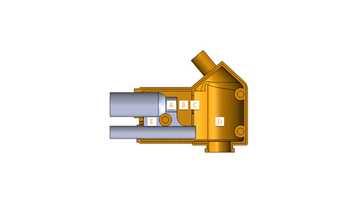
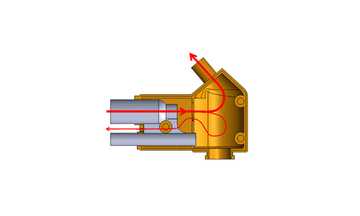
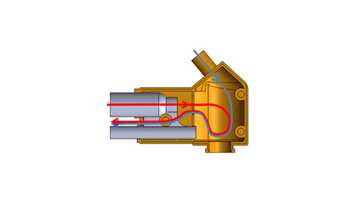
Based on the precise and fast pressure measurement, Medijet enables the innovative pressure trigger MediTRIG. The spontaneous breathing and obstructive as well as central apnea are recorded without an additional sensor, such as an abdominal sensor.
In the medin devices, the pressure trigger is used in the ApneaCPAP and SNIPPV mode and thus opens up a broad range of types of non‑invasive respiratory support
The breathing gas flow set flows via the Benveniste valve into the pressure chamber of the Medijet (red). Pressure builds up there and supports the patient with pressure and flow. During inspiration, the pressure in the patient’s airway decreases, as does the resistance. The breathing gas always flows in the direction of low resistance.
During expiration, the expiratory flow (blue) from the patient meets the incoming fresh gas flow (red). This is redirected out to the environment in whole or in parts. The patient can exhale via the expiration opening and this results in a gas mixture consisting of expiration flow and fresh gas flow.
During expiration, the expiratory flow (blue) from the patient meets the incoming fresh gas flow (red). This is redirected out to the environment in whole or in parts. The patient can exhale via the expiration opening and this results in a gas mixture consisting of expiration flow and fresh gas flow.
The amount of breathing gas which is not needed by the patient may escape via the expiration opening (red, narrow). The airway pressure is measured directly in the Medijet via the proximal pressure measurement and transmitted to the therapy device.
A Breathing gas inlet with nozzle
B Open gap of the Benveniste principle
C Opening to the pressure chamber
D Pressure/volume chamber
E Expiration open
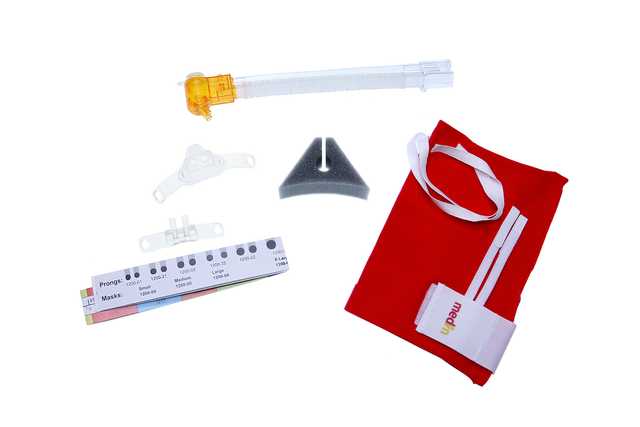
Medijet is secured to the patient’s head with the user-friendly medin bonnet. Medijet is applied to the nose of the small patient using short binasal prongs or soft, gentle nasal masks.